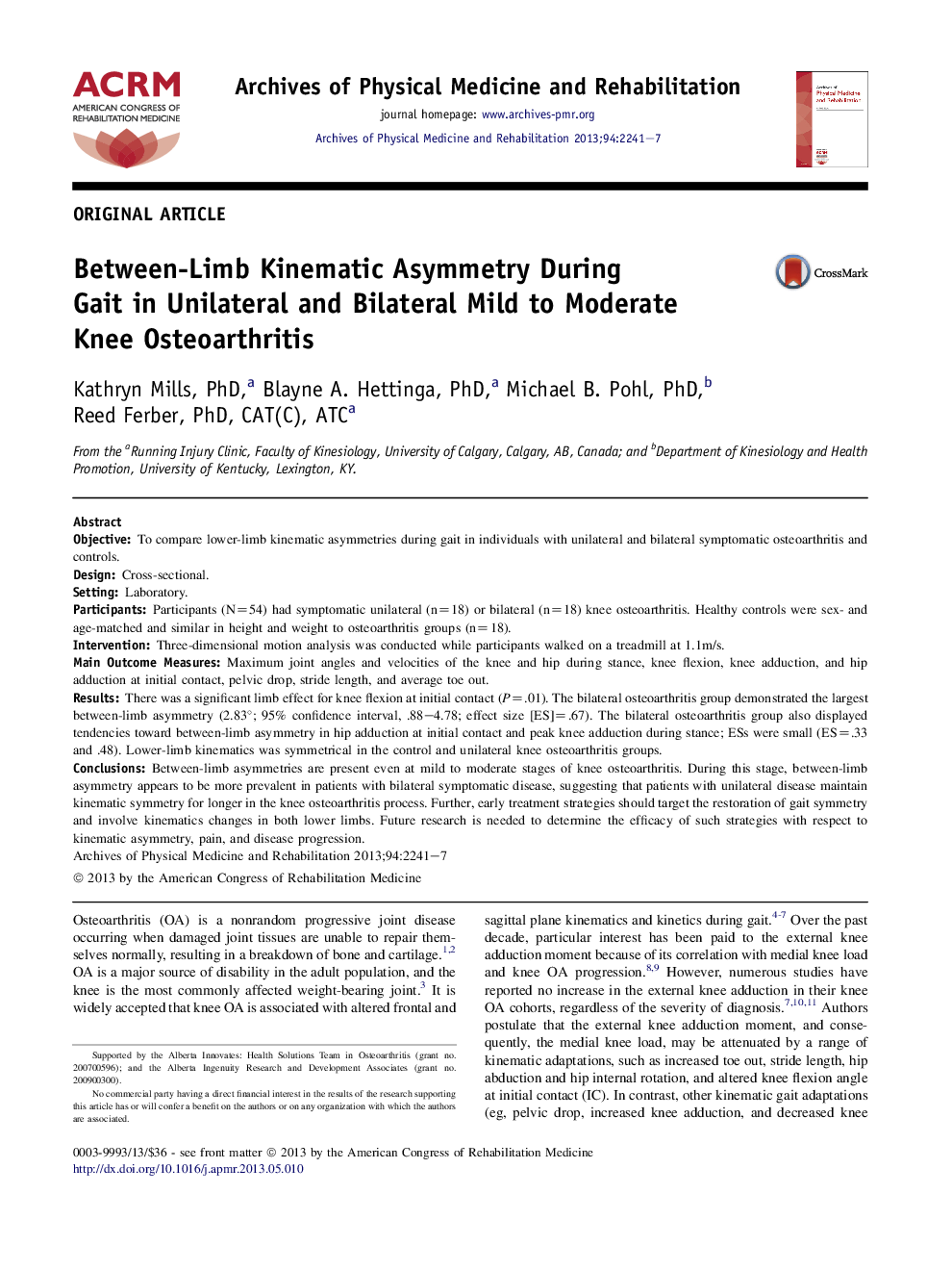| کد مقاله | کد نشریه | سال انتشار | مقاله انگلیسی | نسخه تمام متن |
|---|---|---|---|---|
| 3449130 | 1595705 | 2013 | 7 صفحه PDF | دانلود رایگان |

ObjectiveTo compare lower-limb kinematic asymmetries during gait in individuals with unilateral and bilateral symptomatic osteoarthritis and controls.DesignCross-sectional.SettingLaboratory.ParticipantsParticipants (N=54) had symptomatic unilateral (n=18) or bilateral (n=18) knee osteoarthritis. Healthy controls were sex- and age-matched and similar in height and weight to osteoarthritis groups (n=18).InterventionThree-dimensional motion analysis was conducted while participants walked on a treadmill at 1.1m/s.Main Outcome MeasuresMaximum joint angles and velocities of the knee and hip during stance, knee flexion, knee adduction, and hip adduction at initial contact, pelvic drop, stride length, and average toe out.ResultsThere was a significant limb effect for knee flexion at initial contact (P=.01). The bilateral osteoarthritis group demonstrated the largest between-limb asymmetry (2.83°; 95% confidence interval, .88–4.78; effect size [ES]=.67). The bilateral osteoarthritis group also displayed tendencies toward between-limb asymmetry in hip adduction at initial contact and peak knee adduction during stance; ESs were small (ES=.33 and .48). Lower-limb kinematics was symmetrical in the control and unilateral knee osteoarthritis groups.ConclusionsBetween-limb asymmetries are present even at mild to moderate stages of knee osteoarthritis. During this stage, between-limb asymmetry appears to be more prevalent in patients with bilateral symptomatic disease, suggesting that patients with unilateral disease maintain kinematic symmetry for longer in the knee osteoarthritis process. Further, early treatment strategies should target the restoration of gait symmetry and involve kinematics changes in both lower limbs. Future research is needed to determine the efficacy of such strategies with respect to kinematic asymmetry, pain, and disease progression.
Journal: Archives of Physical Medicine and Rehabilitation - Volume 94, Issue 11, November 2013, Pages 2241–2247